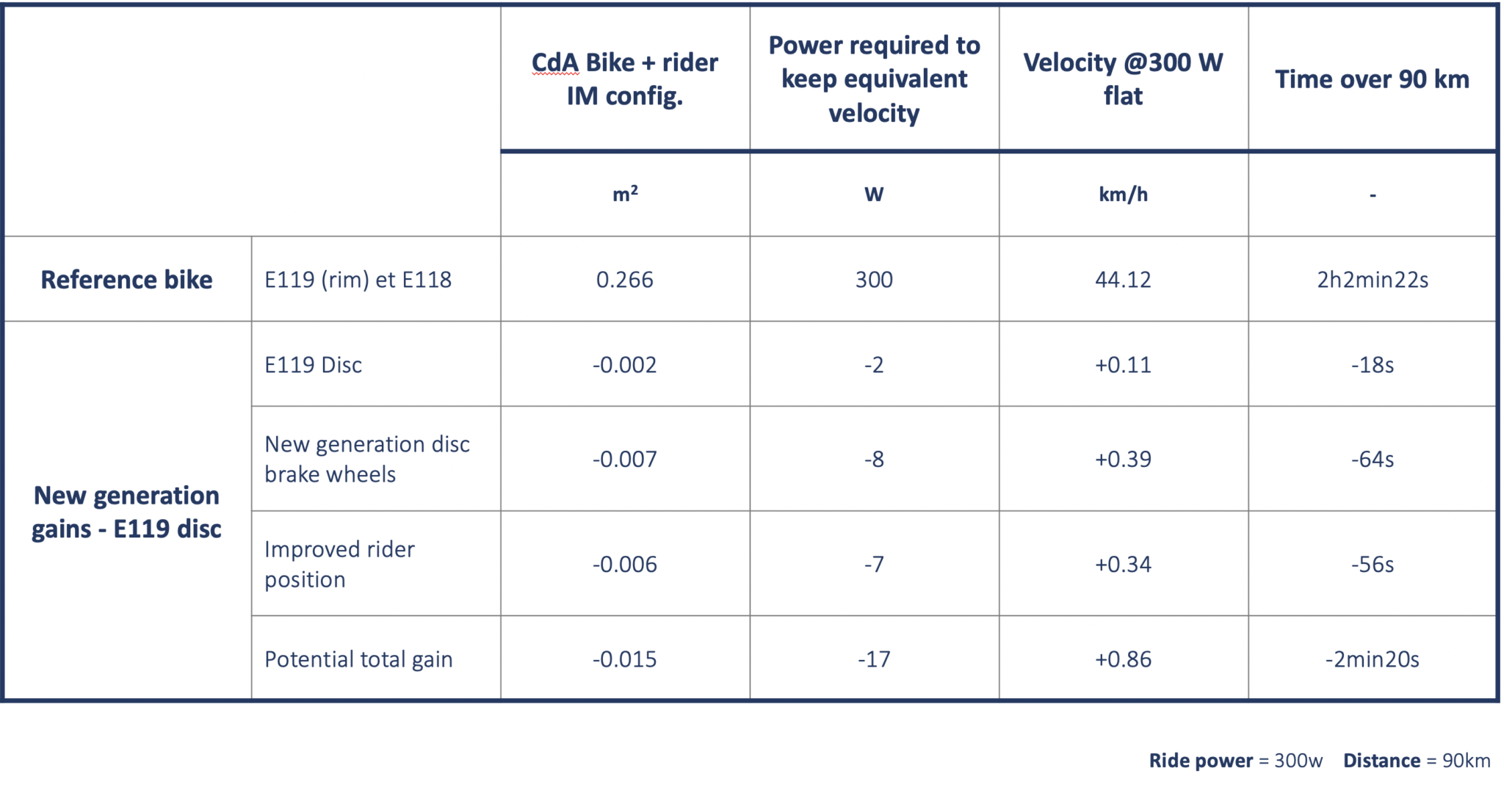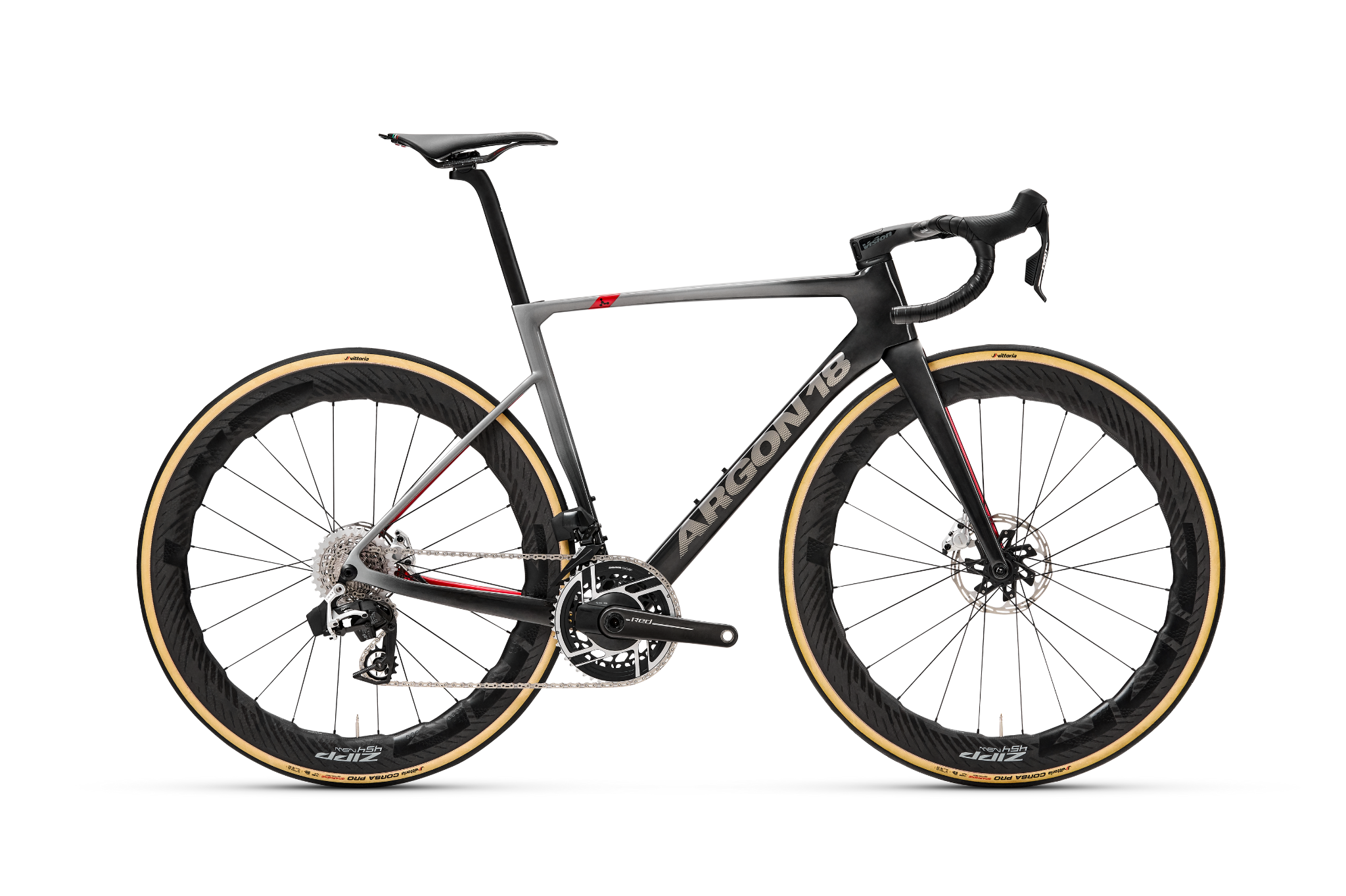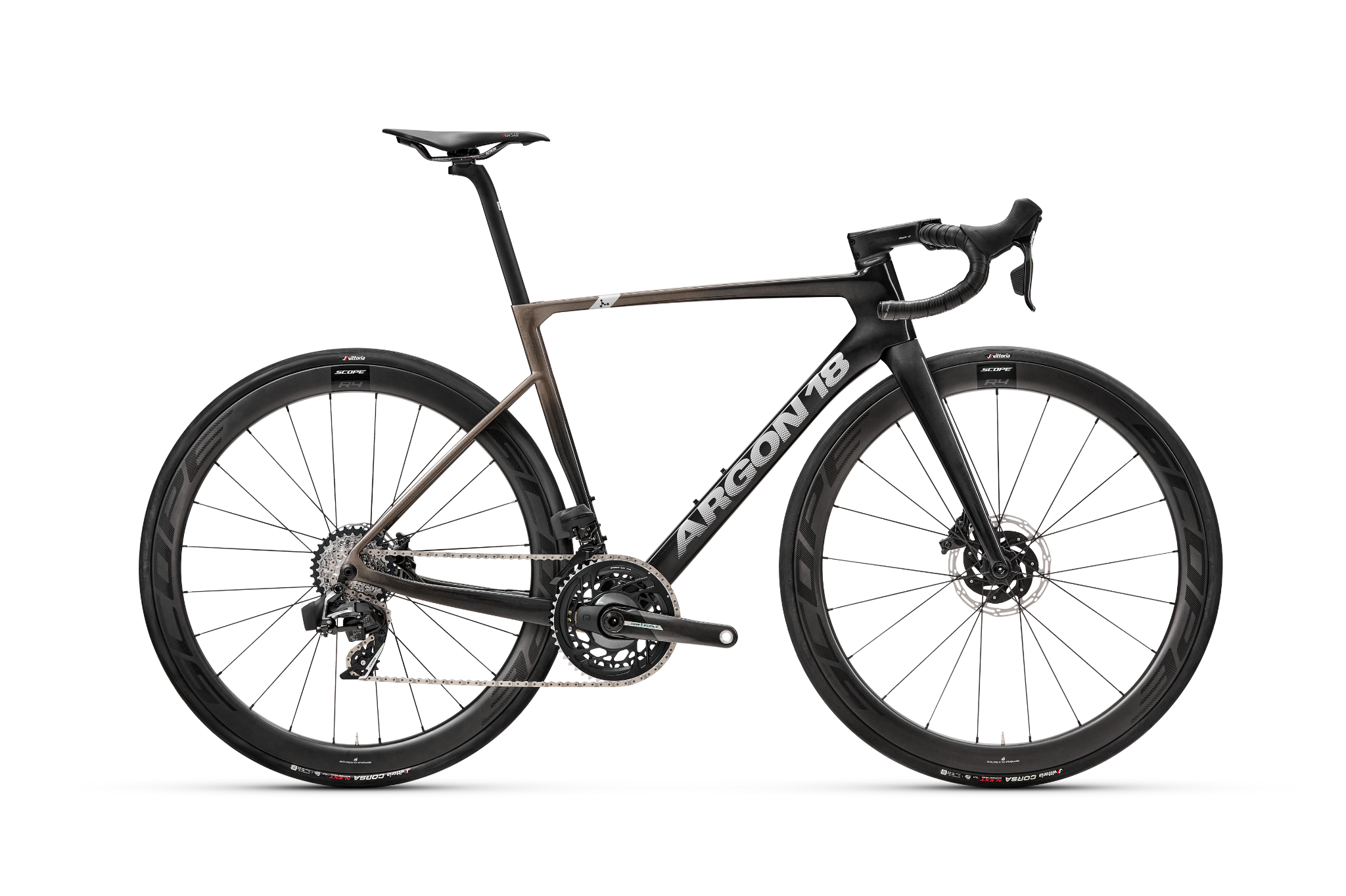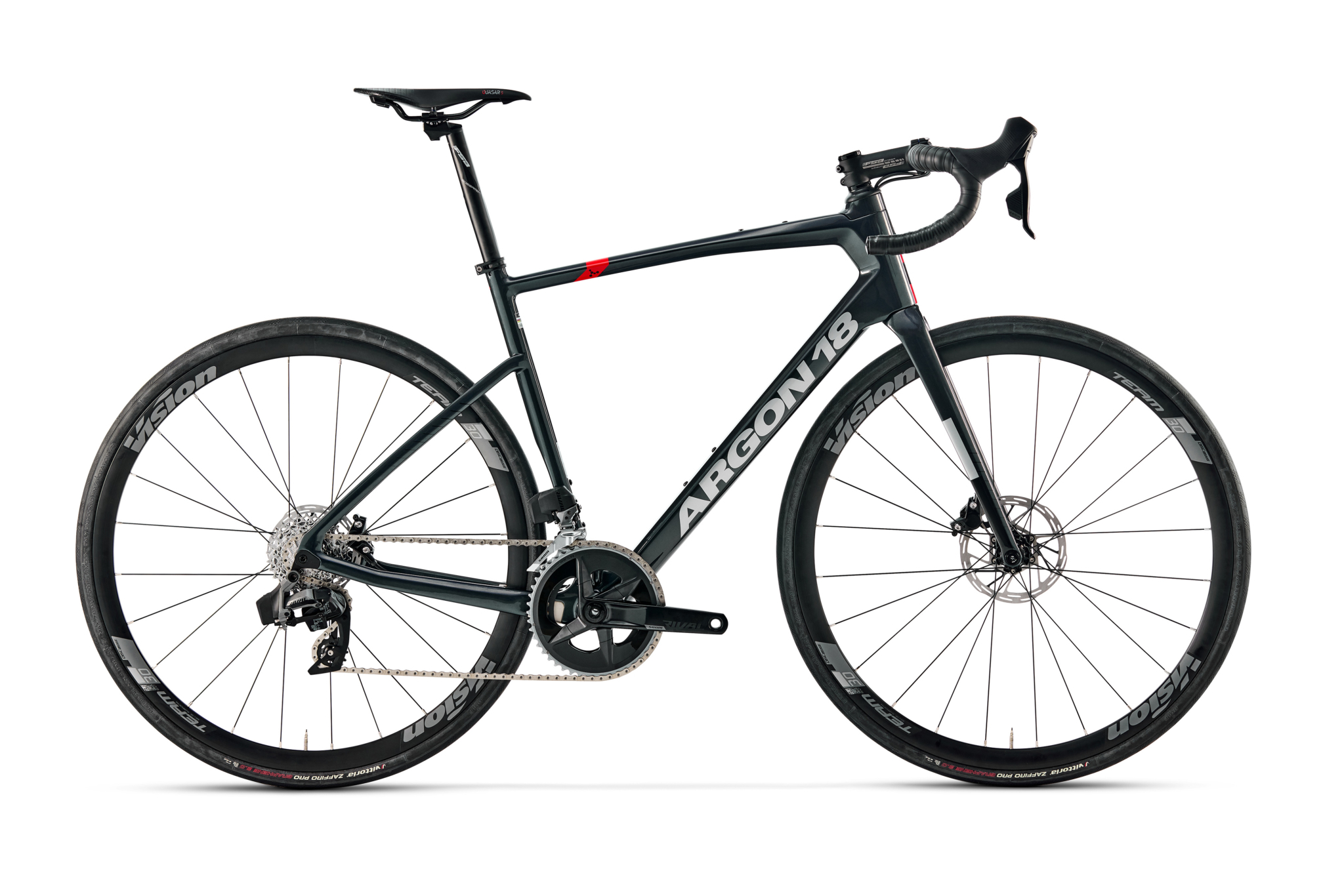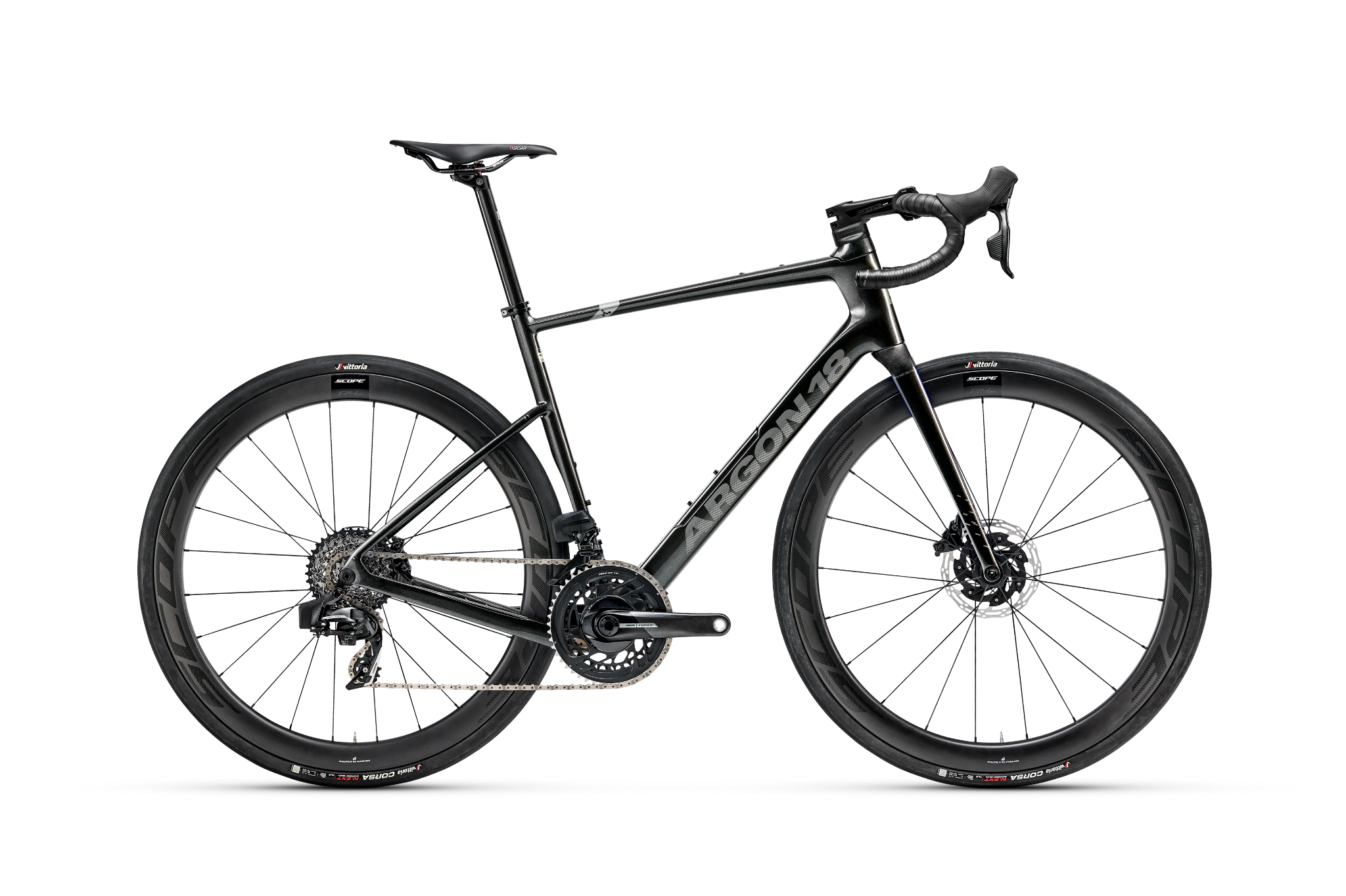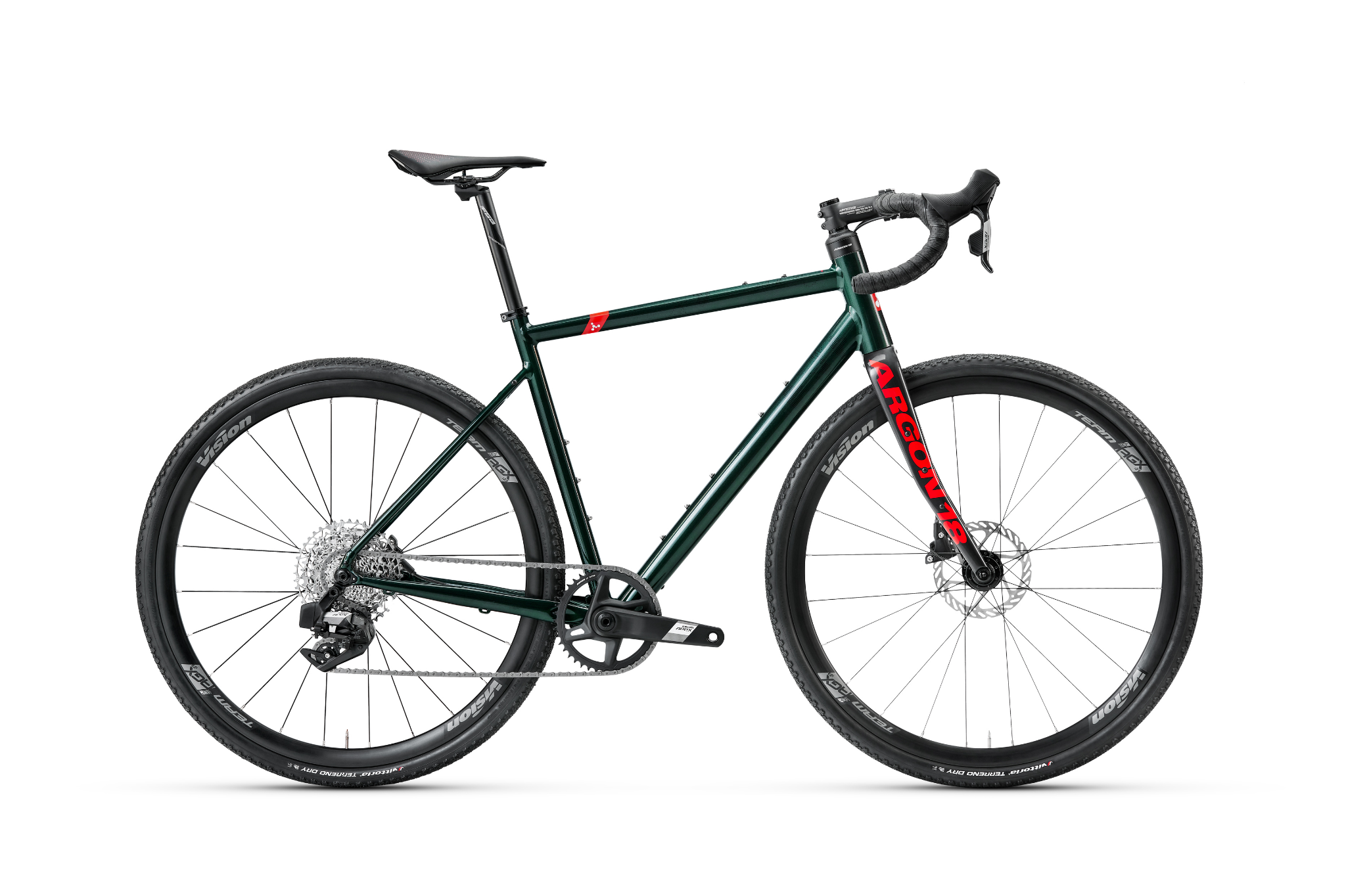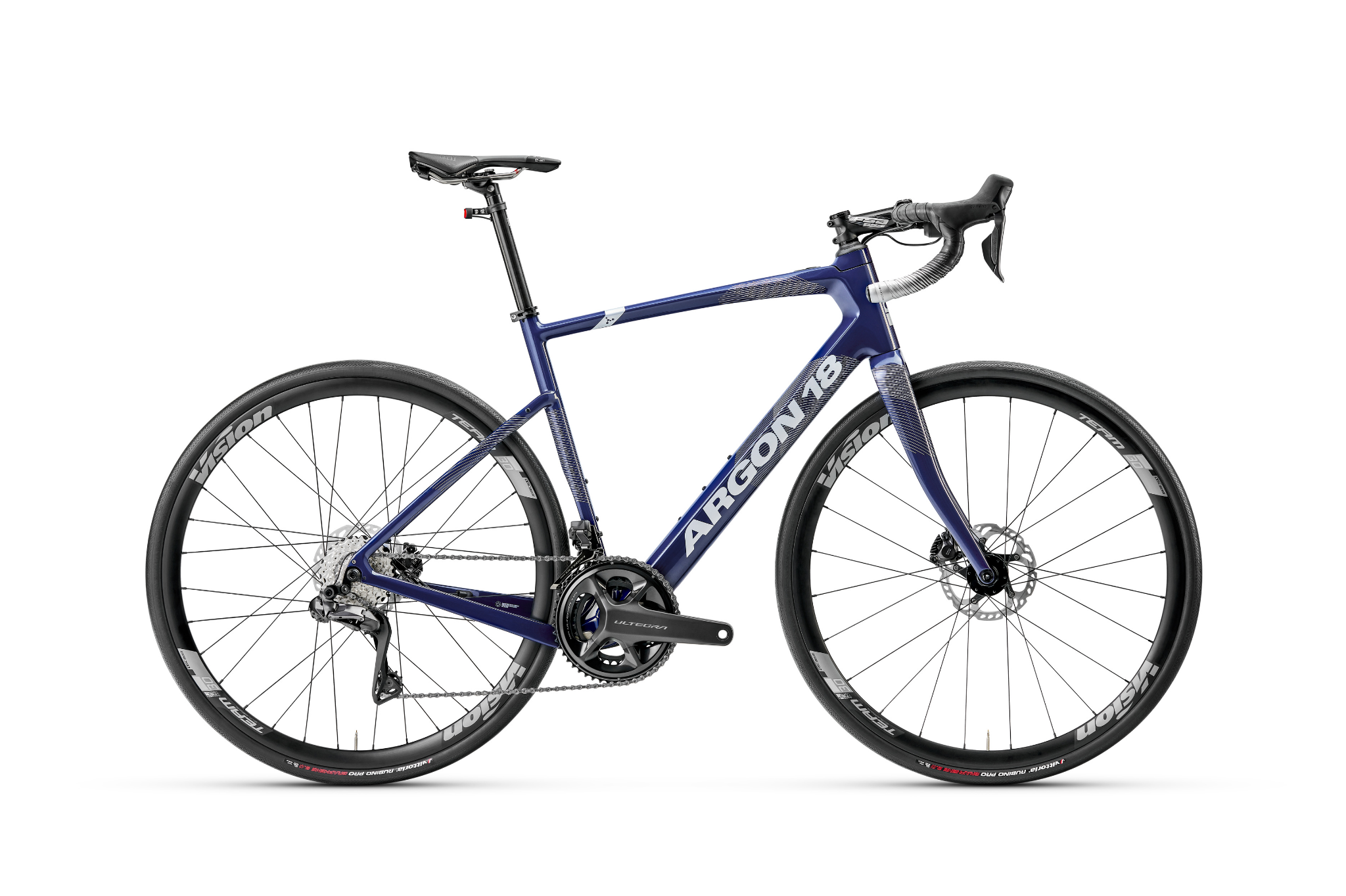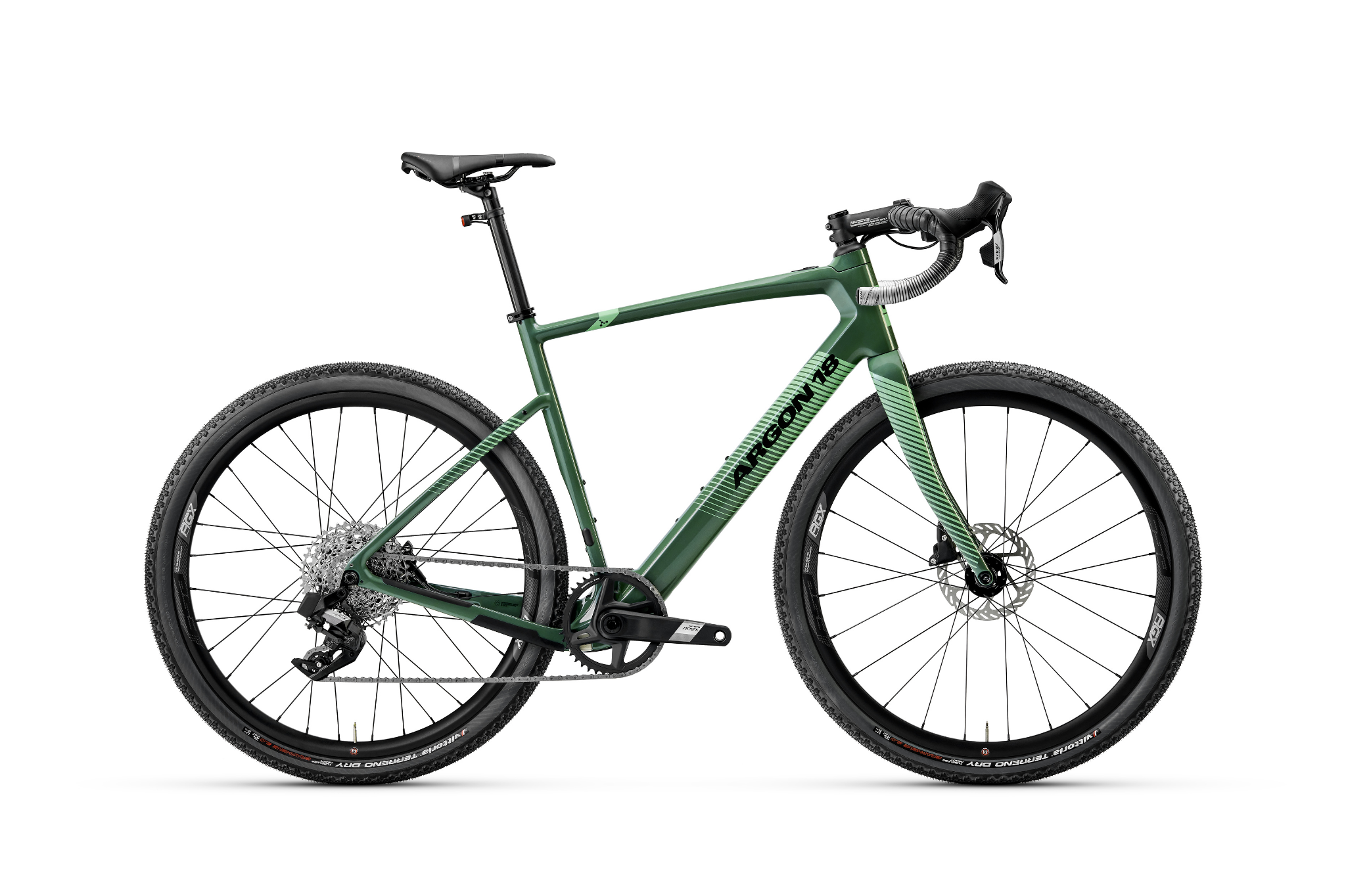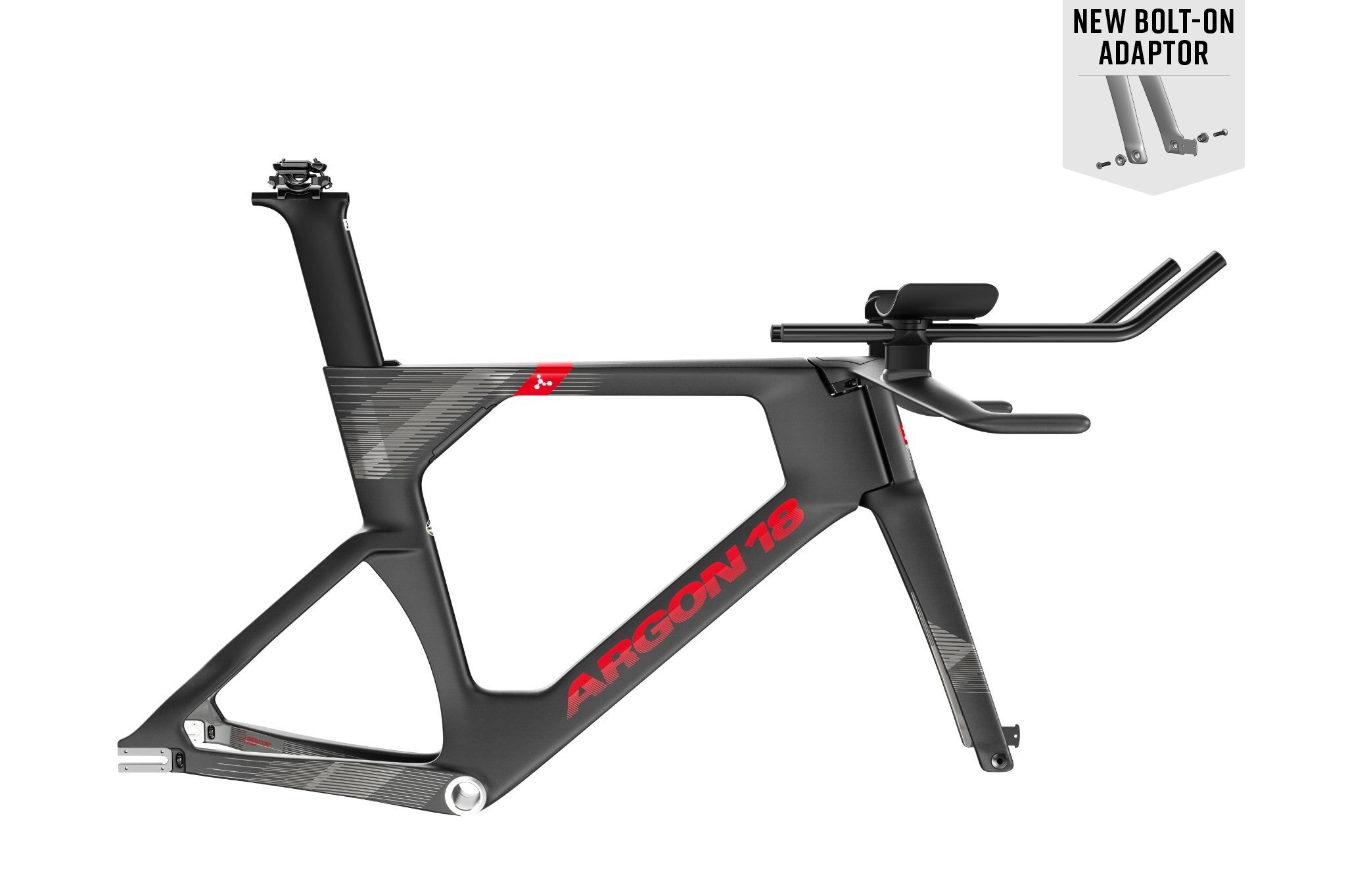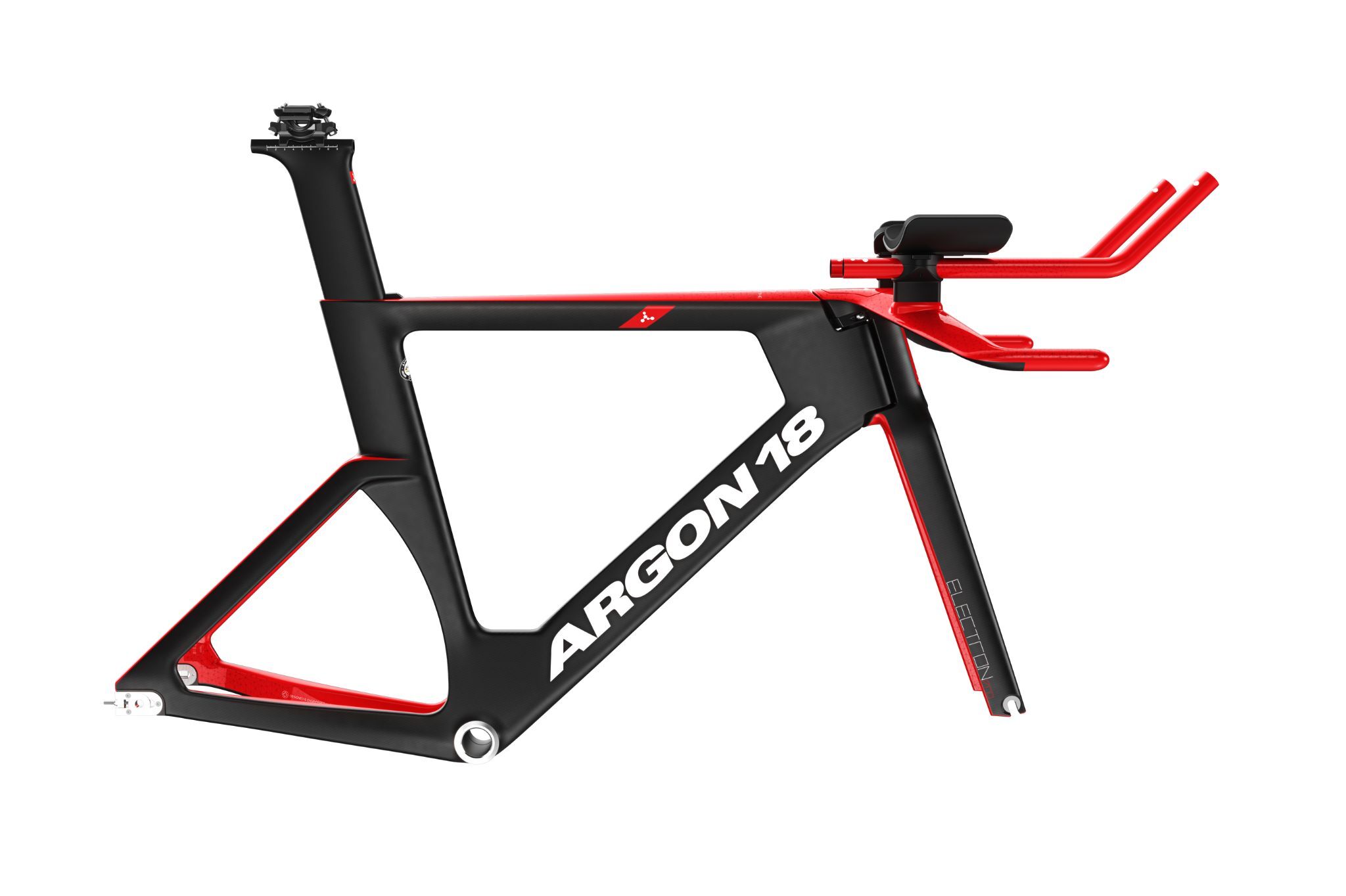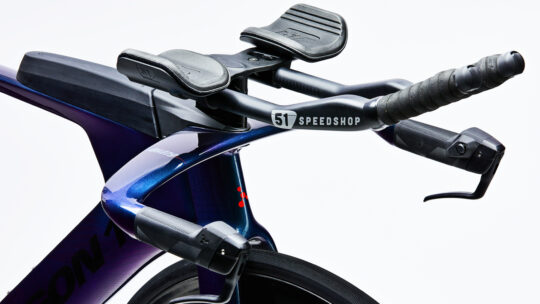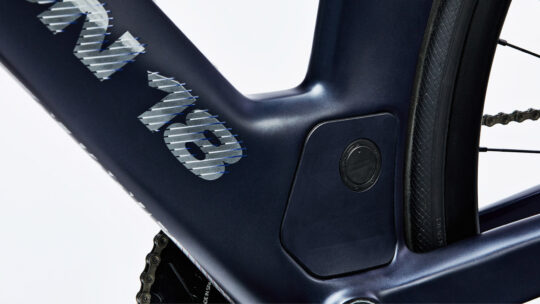R&D Deep Dive: E-119 Tri+ Disc – Aero Performance
The E-119 Tri + was known as one of the fastest tri bikes on the market, so when we began the design process for the new E-119 Tri+ Disc, we had some high targets to meet. Aero was a priority, but our overall design philosophy on this bike was focused on integration and optimising a real-world, race-day setup. This meant that each of our design decisions was based on offering the best overall performance of the bike and rider as a system.
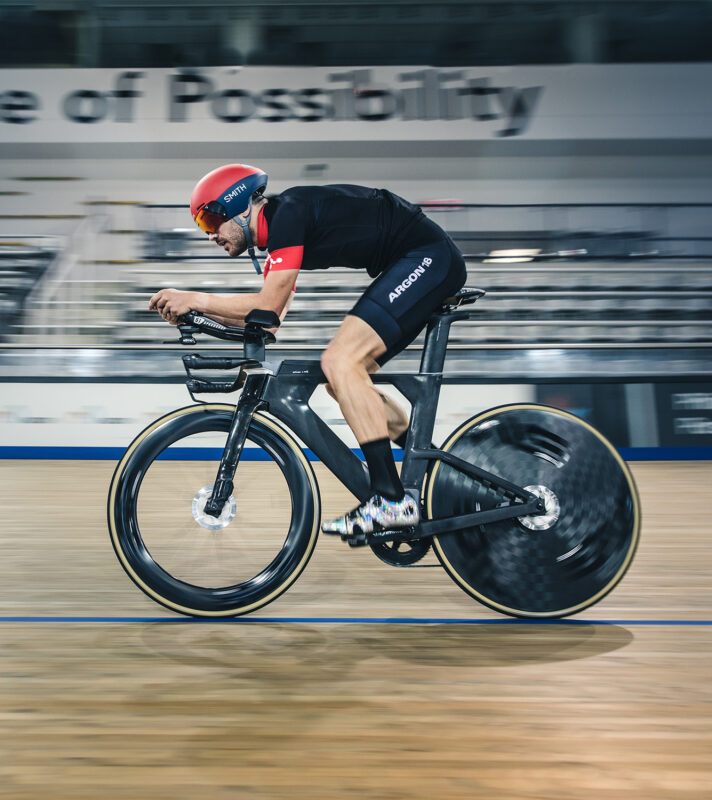
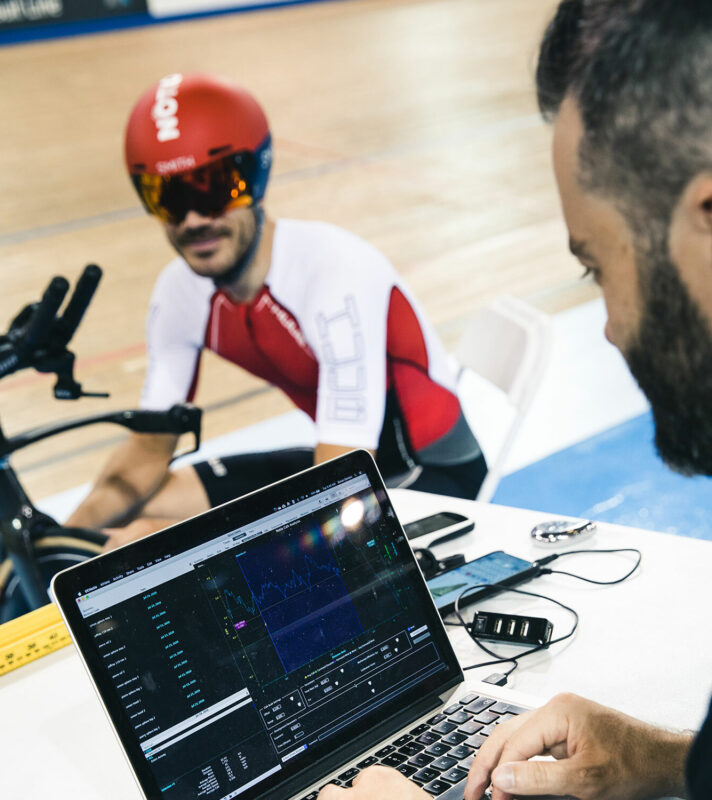
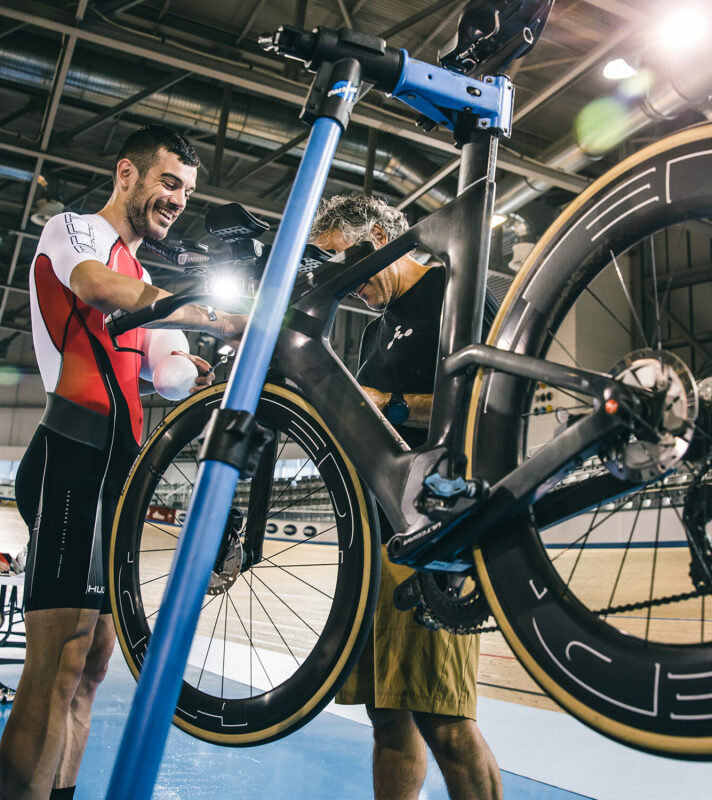
For example, we knew we wanted an integrated toolkit to provide the best convenience for our riders, and wanted to locate it where it would not adversely affect ride quality. The optimal position was in the BB area, which entailed a slight widening of the downtube, meaning a small aero penalty – but less than having tools strapped to the frame of the bike. We also heard from our athletes that they wanted a wider handlebar (from 38 to 40cm), and although this also can affect aerodynamics, the improved handling more than makes up for any losses. The aero penalty of disc brakes was offset by integrating the calipers as well as the hydraulic reservoirs. This only adds to the benefit of increased confidence that riders feel with the braking power of discs, as well as the E-119 Tri+ Disc’s compatibility with more aero profile wheelsets. Overall aero improvements to the frame include an improved profile for the fork and handlebar, as well as a triangle in the TT/ST junction to smooth airflow between the rider’s legs at the rear of the frame.
The new E-119 Tri+ Disc offers up to a 10W advantage over the previous-generation E-119, considering frame optimization, system integration, and compatibility with advanced aero components, such as wheelsets. When optimal rider position is factored in, using new fit range capabilities, it can add an additional advantage. Taken together, the new E-119 Tri+ Disc can offer a total of up to 17W aero advantage when considering the full bike and rider system.
CFD for aero improvements
CFD analyses were used at every step of the design development to help make design decisions based on performance figures. Each region on the bike which was modified (basebar, fork, disc brake caliper, etc.) was first analysed separately with several iterations, to provide quick results. The selected results were then combined to analyse the full bike with rider, and final modifications were done. All analysis was done with yaw angles ranging between -15° and 15°, as this is what has been found to be the most realistic yaw that riders experience.
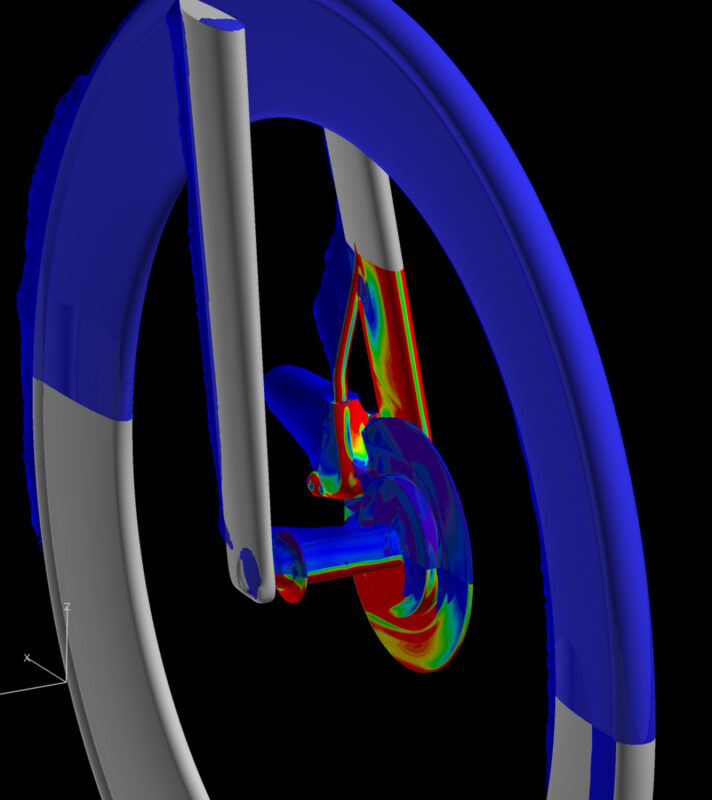
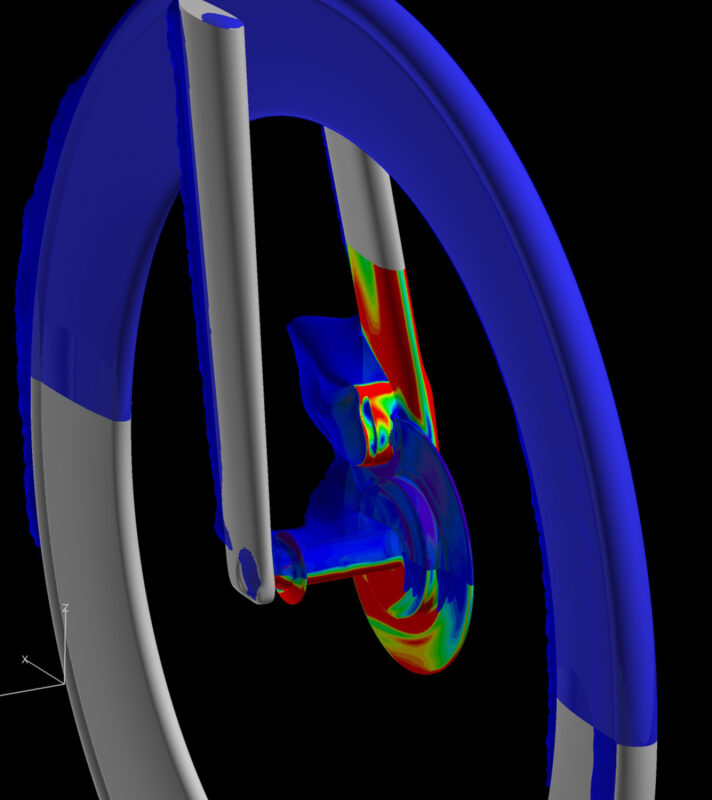
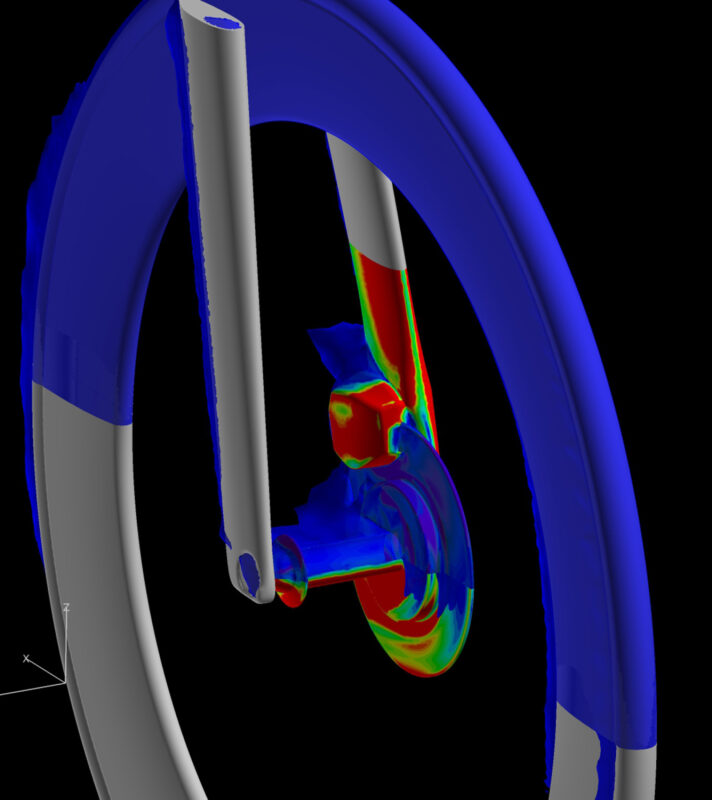
CFD Analysis of the new E-119 Tri+ Disc
Example of detailed CFD analyses of the caliper region at different steps of the design process; analysis of flow interaction with the bike surfaces.
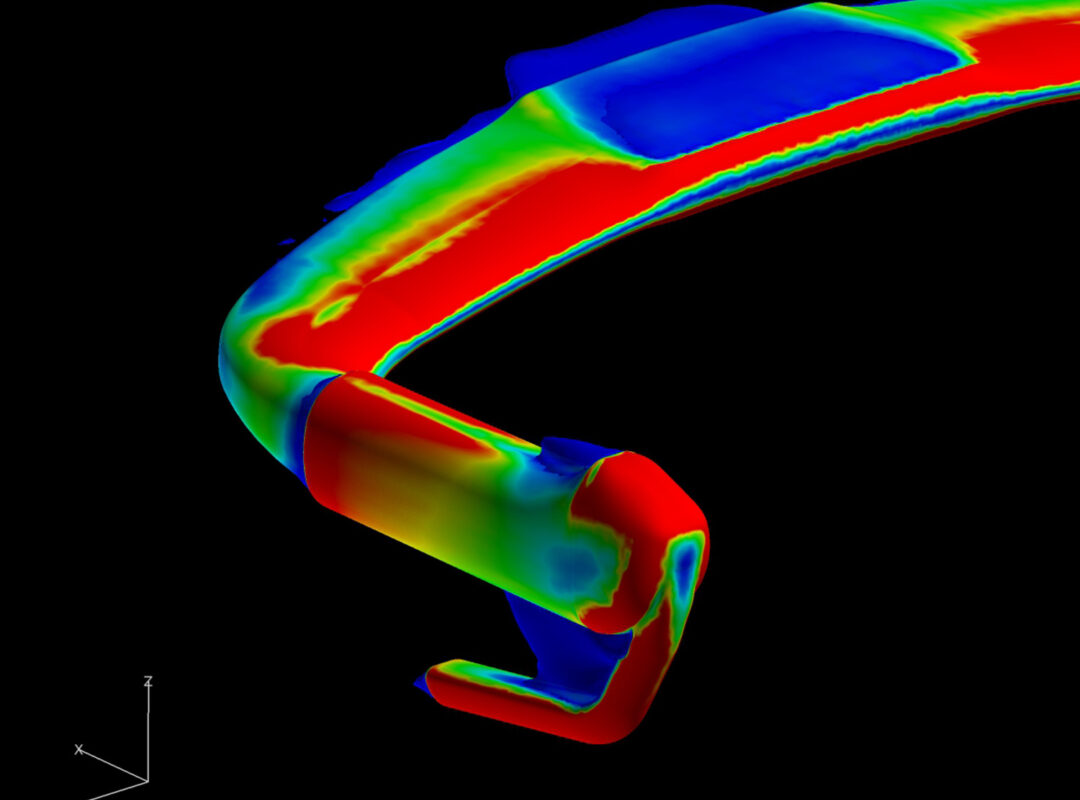
Example of CFD analysis performed with handlebar and preliminary brake lever design. Several analyses were performed to fine-tune the profile to reduce flow separation from surfaces.
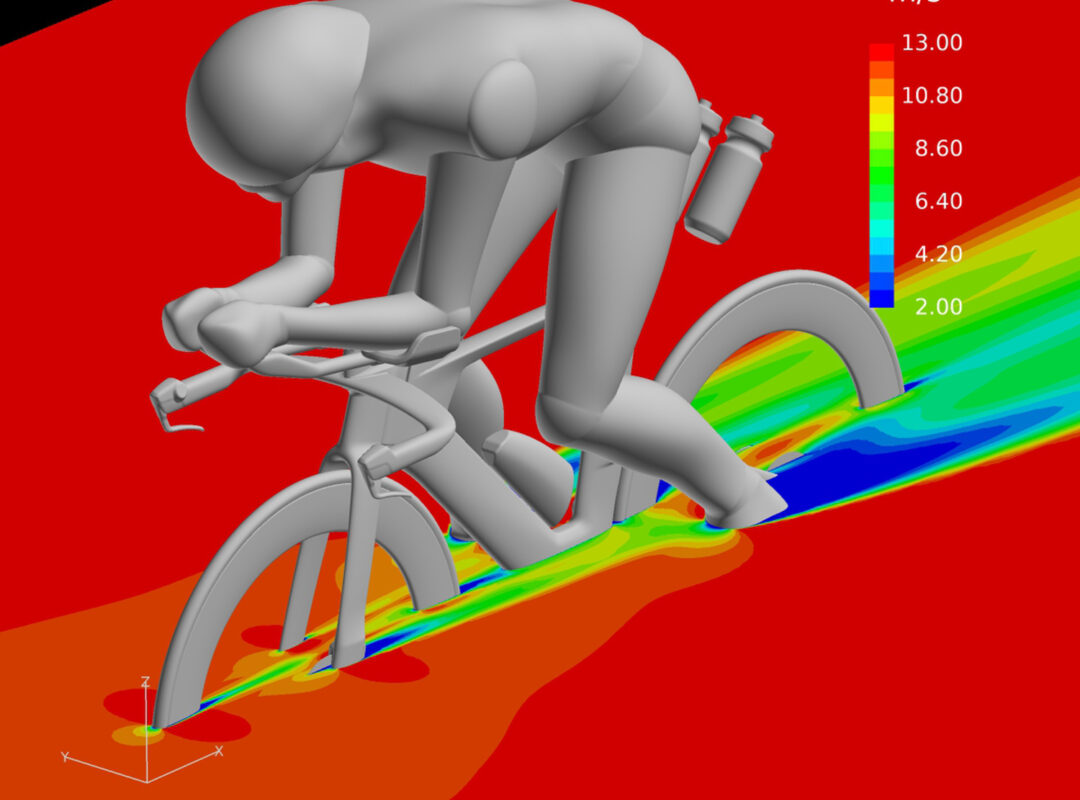
CFD analysis with bike, rider and water bottles, 0° yaw.
Aero Testing
In order to get accurate results in “real” riding conditions and measure performance to validate design decisions, we took the new E-119 Tri+ Disc to the Mattamy National Cycling Centre in Milton, Ontario to test it on the track using the Notio device. Full test protocol and results can be found in our E-119 Tri+ Disc white paper.
We tested the new bike against existing models in our lineup: the E-119 Tri+ (rim), E-118 Tri+ (disc) and E-117 Tri Disc. The first test was in the ‘naked’ state: no nutrition, hydration, or other carry-ons. These tests showing the three aero bikes to be virtually equal in terms of aero advantage. The E-117, which doesn’t feature the same level of integration or aero engineering as the other three, showed higher aero drag.
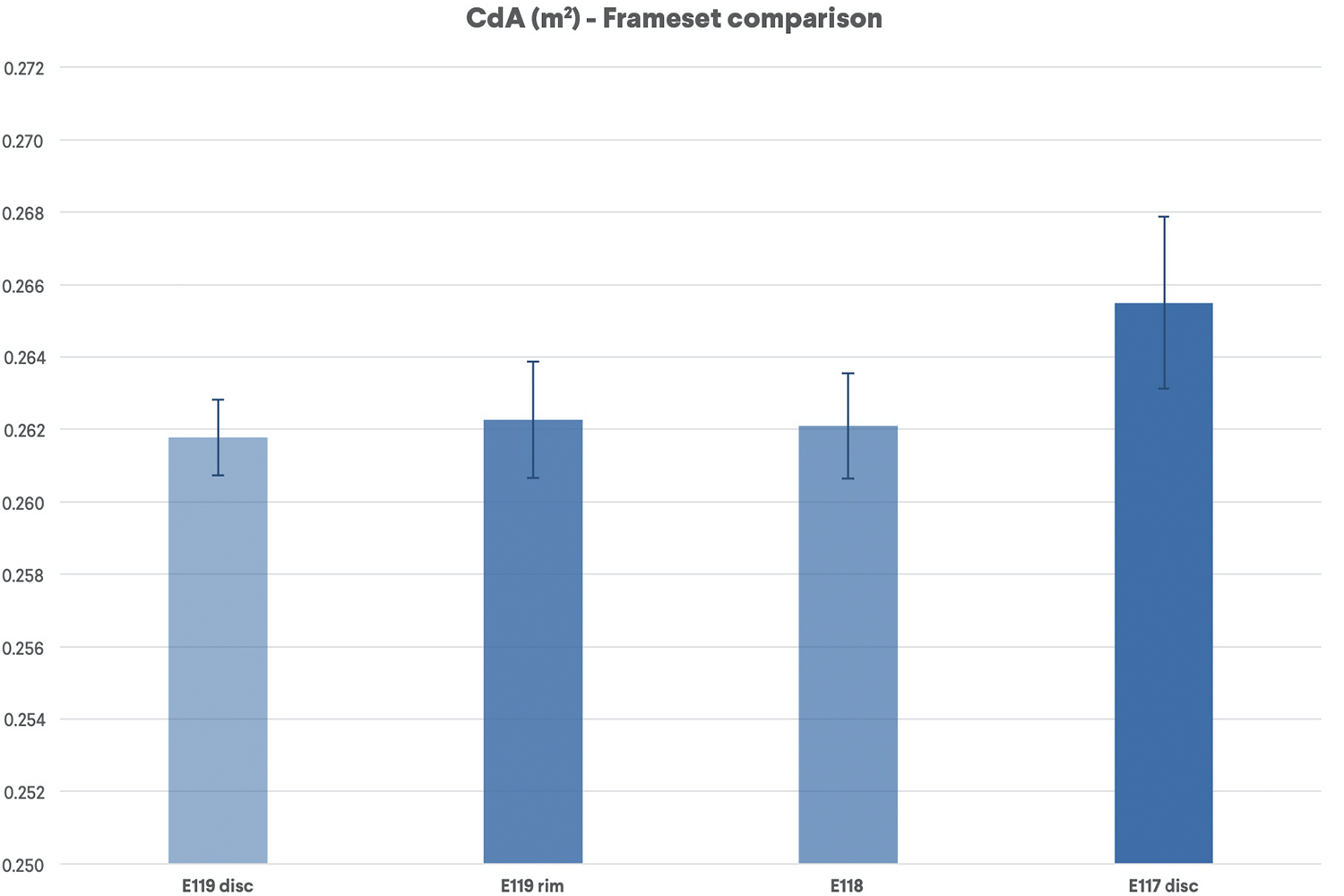
The CdA results of the bike and rider for the four different framesets show no statistically relevant difference for the three main aero bikes (E-119 Tri+ Disc, E-119 Tri+ rim and E-118). This does not mean that there is no difference whatsoever, but the variability between the runs of each test is higher than the difference between the three framesets (lower than 0.001m2, about 1W for a 300W/0.300m2 CdA rider).
But that ‘naked state’ wasn’t what our design process prioritised. Since we were focused on integration, and optimising a real-world, race-day setup, we had to test in that race-day condition. That meant a test with the full long distance setup: hydration and nutrition as would be needed for a full Ironman distance. In that test, we saw the new E-119 Tri + Disc clearly outperform the other bikes in our lineup.
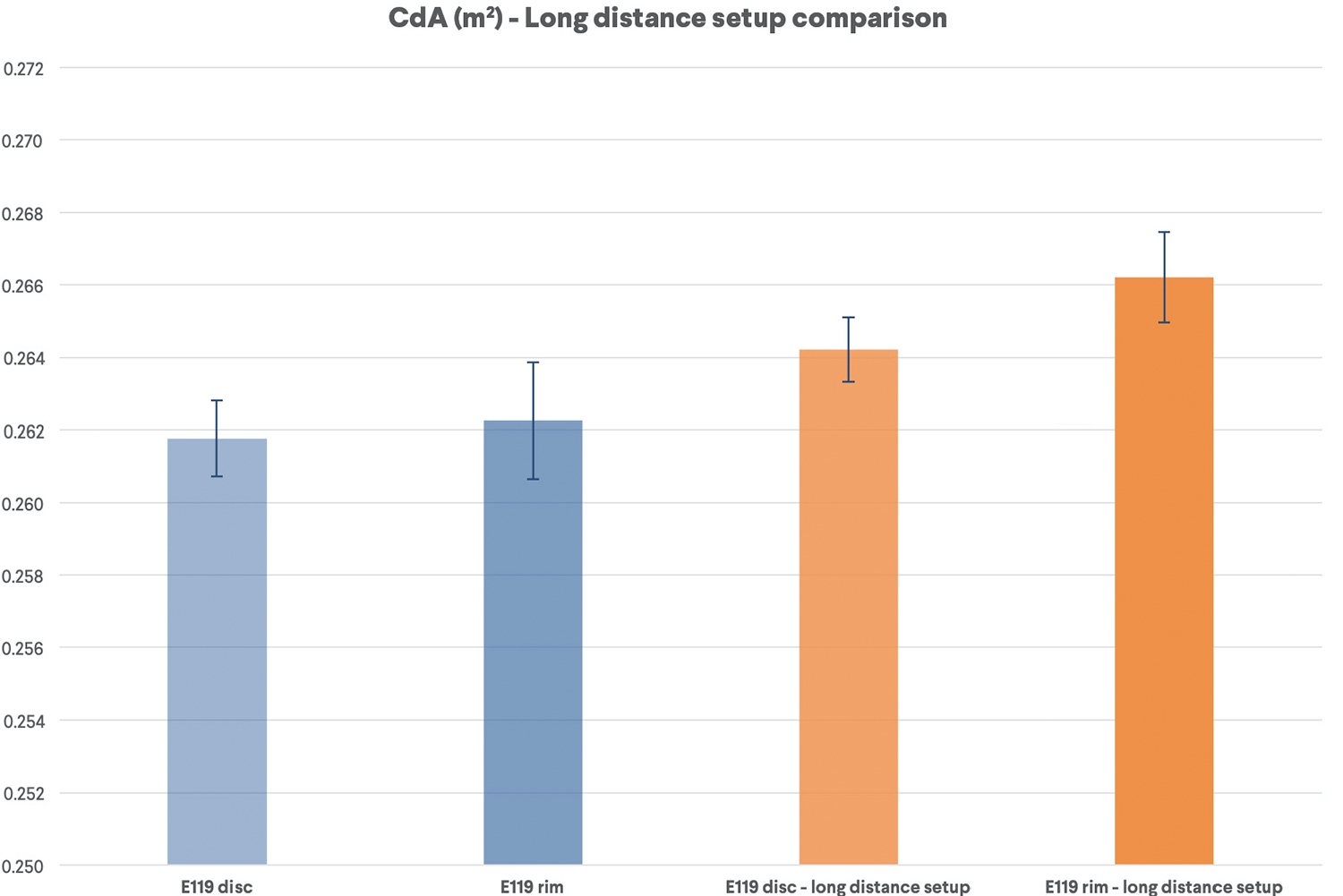
The results of the long-distance setup (tools + food + water) reveal a real advantage for the E-119 Tri+ Disc, in the order of 0.002m2.
We also wanted to analyse how the increased usability of our new cockpit could benefit the rider’s aero positioning and overall performance. The E-119 Tri+ Disc cockpit, developed with 51 Speedshop, differs from the E-119 Tri+ rim cockpit by its ease of adjustability. A test was performed to see if we could improve rider aero performance with a quick fit modification. Our mechanics and experienced fitter, who accompanied us on the track, did a quick modification of the angle of the extensions (to a higher angle) and elbow pad position to move the rider’s hands higher - a modification which took less than five minutes to execute. We then tested this position against the original position on the E-119 Tri+ Disc, as well as against the E-119 Tri+ rim. We found that this quick modification helped our rider improve CdA by more than 2%. This shows how the combination of the Notio sensor and an easy-to-use cockpit helps improve the rider’s performance very efficiently.
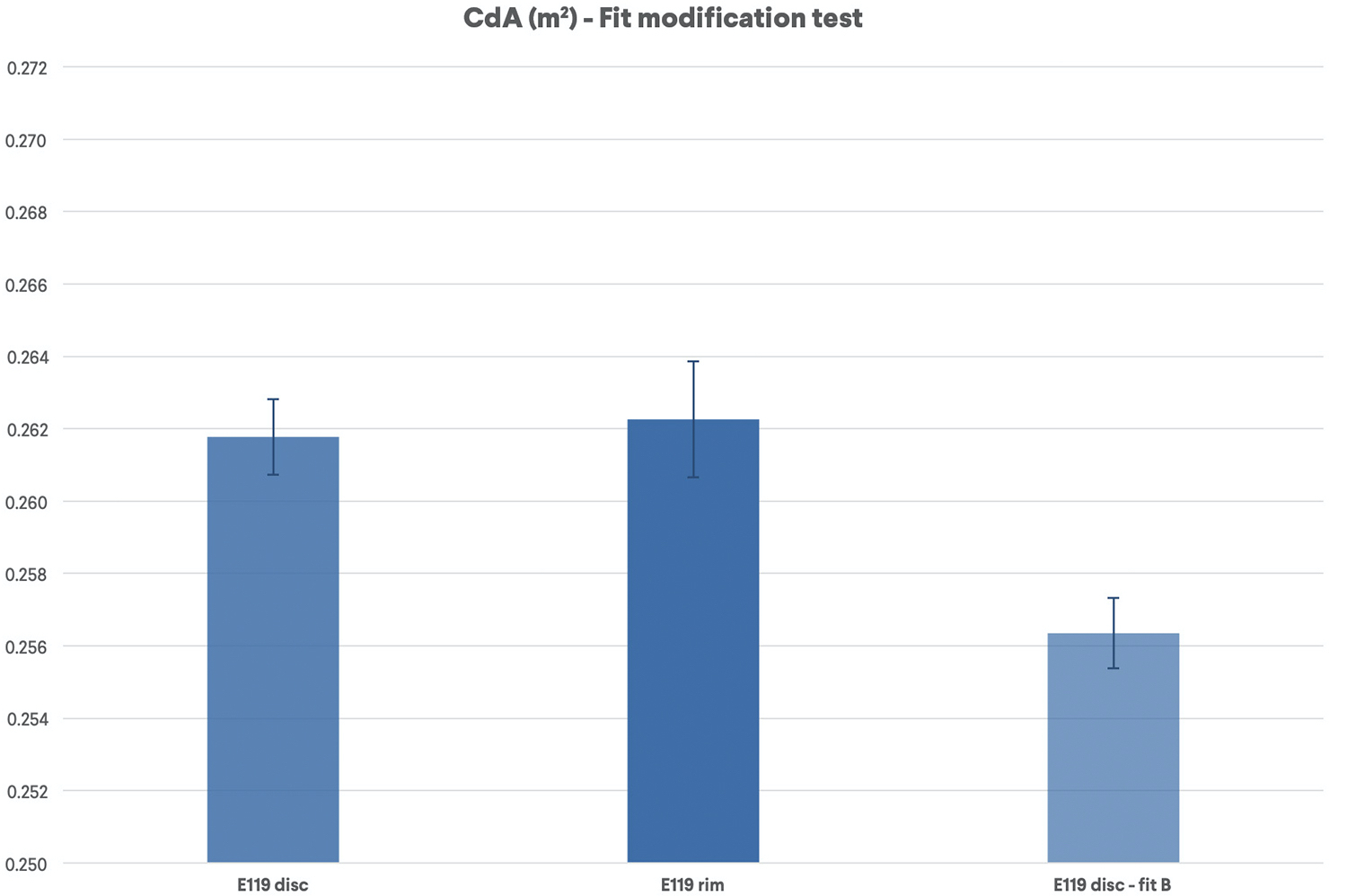
For this test, our mechanics and fitter chose to change to a more aero rider position (Fit B).
Overall, these test help confirm that we’ve developed a bike that precisely meets the goals we set for it: an exceptionally rider-focused, easy-to use machine that’s as fast as it is unique. Taking into account all of those advantages, we see that athletes can gain up to a 17 Watt advantage with the new E-119 Tri+ Disc. With an unparalleled level of integration, adjustability, and our most advanced aero engineering, this is the bike to launch you into 2021.
